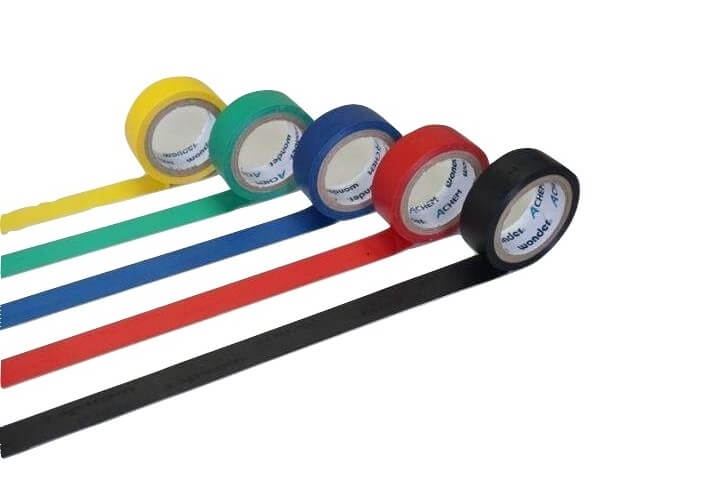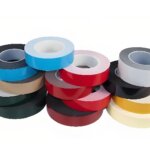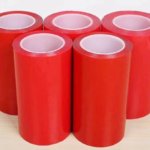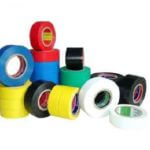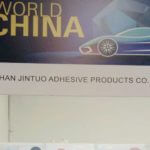Top 6 questions and answers about adhesive tape from internet
1 What are the many types of tapes? Like masking tape?
Could you tell me the type not the brand, please?
How many types are there?
Answer 1
Scotch tape
double-sided tape
duct tape
electrical tape
painters tape
masking tape
packaging tape
foam tape
mailing tape
Answer 2
Scotch tape.
Duct tape
Adhesive tape
EVA foam tape
Double sided tape
Velcro tape
Video tape
Cassette tape
Audio tape
Masking tape
track tape
Aluminum tape
Packing tape
Electrical tape
Correction tape
Double coated tape
Polyethylene Foam Tape
Toupee tape
Marine tape
Insulating Tape
Prismatic Tape
Medical tape
Reflective tape
Water-activated tape
I could keep going lol but this gives you an idea.
Answer 3
more than you can count.
Electrical tape
duct tape
artist tape
framers tape
gaffers tape
plumbers tape
scotch tape
masking tape
painters tape
double stick tape etc
2 What is polyethylene foam?
Polyethylene is a class of thermoplastics practically ubiquitous in consumer products. In its foam form, polyethylene is used in packaging, vibration dampening and insulation, as a barrier or buoyancy component, or as material for cushioning. It is most frequently seen as a packaging material.
Sixty million tons of polyethylene is produced worldwide each year, which is even more than it sounds like when you consider its low density. In the UK, polyethylene is known as polythene. Worldwide, the material is sometimes abbreviated as PE.
Polyethylene is produced through the polymerization of ethylene. Like other polymers, polyethylene is made up of huge chains of ethylene and has a molecular weight in the millions. These chains stick together through weak Van der Waals forces, meaning the material can be ripped apart by human hands. Polyethylene with different densities or material properties is created by using different catalysts during the polymerization process. For example, HDPE (high-density polyethylene) is produced with the catalyst chromium, which causes the molecular chains to branchless and therefore possesses a higher density.
Polyethylene is buoyant, making it popular for nautical uses. Most types of polyethylene are non-abrasive; serve as a thermal insulator; are inert to water, grease and solvents at typical temperatures; are CFC-free and ozone friendly, recyclable, odorless, and very lightweight. Many types of polyethylene are approved for use in the food industry.
3 How do I remove sticky foam tape from surfaces without leaving the residue?
I’m talking about that white double-sided foam tape. the most heinous instances seem like they’re on wood in particular — I don’t know how to get this stuff off completely, and I’ll be fined if I don’t… maybe I shouldn’t have put up so many posters…
Update: also, I don’t really have the time or the money (or the transportation) to get any particular product right now, although if you DO have product solutions for future situations, you can include those.
Update 2: also, with these other materials, how exactly would I lay them down/work with them?
Answer 1
second, the olive oil suggestion, since it is a wood surface. If you don’t have olive or other cooking oil, then peanut butter or mayonaise ( not the diet, or miracle whip). On painted surfaces, I would skip the oil-based solutions and go for the goo-gone or the alcohol or nail polish remover. Be very careful, use cotton swabs working from the outside of the sticky mess.
Answer 2
use an old spray bottle and make a warm soapy solution, spray the foam lightly and then remove , or if it is a flat glassy surface use a razor blade to scrape the moist residue off.
Answer 3
There used to be a spot remover in the stores by the laundry soaps. It was in a can with a lid. The can was about 3-4 inches wide about 1-2 inches wide and about 5-6 inches tall. I believe it was blue or had blue on it. It is not a friendly substance but it would work! If you find it, read the label carefully and make sure it is what you want. Also, if the wood is finished peanut butter sometimes will get stuff off! Lighter fluid is another option but not a friendly one!
4 Where do I get foam tape?
I watched a video on youtube about making a bristlebot or something and I couldn’t find where to get foam tape
Answer: Pretty much anywhere, really. Office Max, Target, Wal-Mart, Michael’s, any of those kinds of places. A lot of the time it will be by the scrapbooking stuff, or by the other tapes.
And, hey! Now I know what a bristlebot is!
5 What can I use to remove the glue residue from tape on a whiteboard without damaging the protective surface?
We were using black tape that’s sold in office supply stores that used to create lines on the board. When I removed the tape, the glue resude has remained on the surface. 70% Rubbing Alcohol does not remove it. Any suggestions based on experience?
Answer 1
There is a product made for removing the goo left behind by stickers on retail products. Sorry, I don’t know the name off hand but I believe it is something like “goo off”.
Answer 2
believe it or not, lighter fluid is something I have used on many surfaces including dry erase boards. I have used it on my custom motorcycle for tar removal, and to get price stickers off of glass, and plastics without scratching the surface. Take your time when doing it. It’s an oily solvent, which helps as a “buffer” to keep from scratching the surface.
Answer 3
“Goof Off” on a small can (yellow) about the size of one of those 3-in one oil cans. I think there is another one out there called “Goo Gone” too. I would a little hesitant about using it on wood. Wipe it quickly and don’t let it set too long. Check one of the larger home centers or hardware stores although some of the super markets and WalMart may have it too.
6 Removing foam mounting tape
This is the double-sided black foam tape used to attach light trim to automobile exteriors, like acrylic shades.
The instructions say to “rub off excess with fingers” but this is woefully inadequate. Toluene and IPA soften it up, but evaporate
before they can help enough.
Any other suggestions? I am hoping for something I can brush-on, wait ten minutes, and scrape off.
Answer 1
Solvents can attack paints and plastics. Best to stick with mechanical removal.
Answer 2
As Frank said, solvents can be a double-edged sword. MEK (methyl ethyl ketone) or ethyl acetate will come closer to dissolving the adhesive, but also the underlying acrylic. Personally, I’m surprised that the IPA didn’t damage the underlying acrylic.
If you go the mechanical route, consider cooling the adhesive in order to stiffen it. That way the energy you apply to it will go into breaking it and not just deforming it and then letting it bounce back. Ice is the handiest but messy, an ice block or an ice wrap is better, dry ice would really be great.

